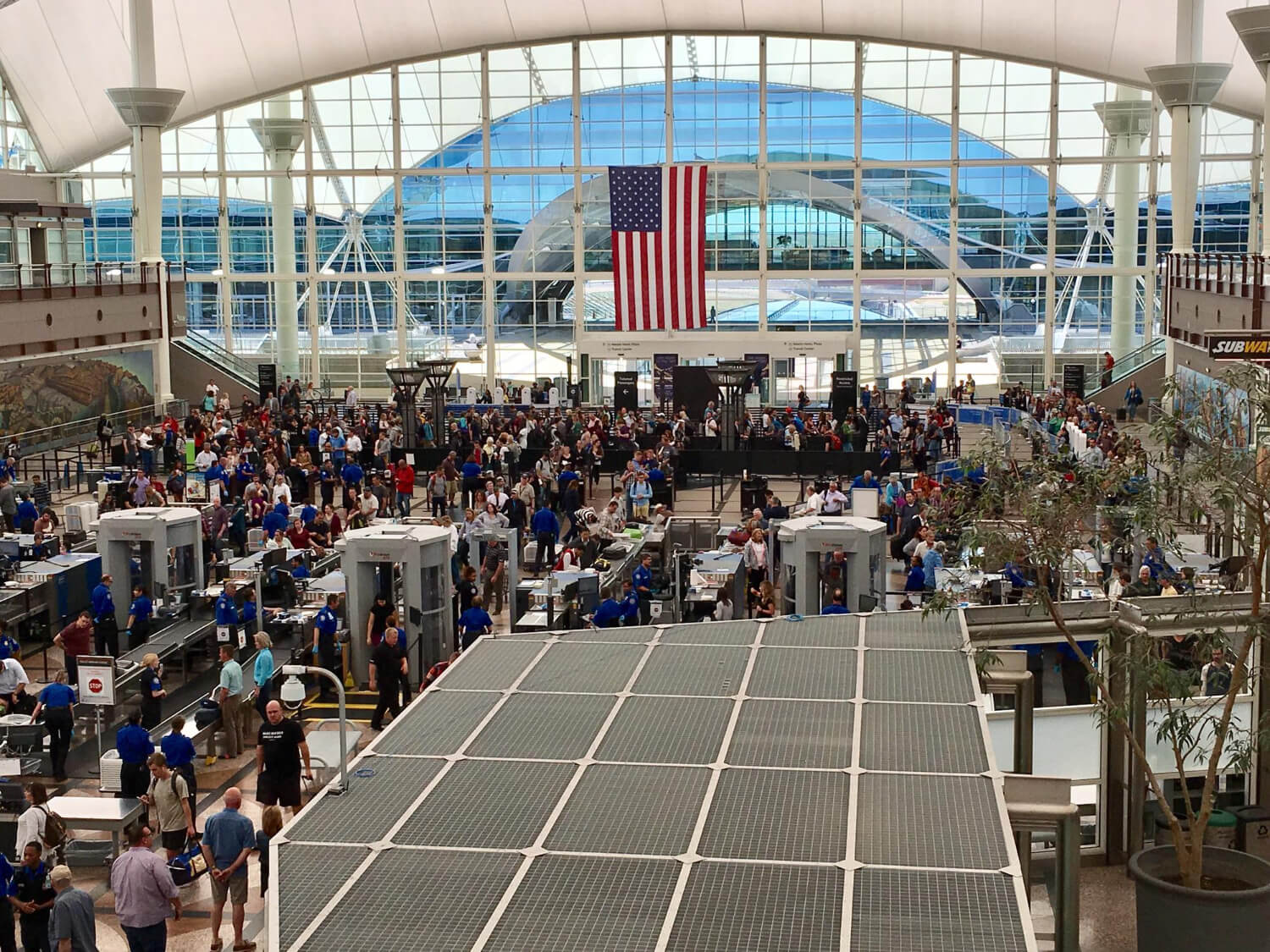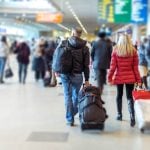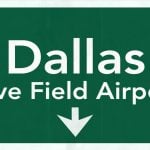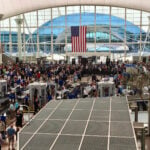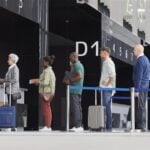Remember last Thanksgiving when airports across the U.S. were swamped with travelers? The TSA screened 3.08 million people in a single day (the Sunday after the holiday), a record, and also a reminder that holiday travel is equal parts reunion and endurance test. Most travelers made it home, but not without a fair share of delay alerts and tired gate crowds across the country.
2025 might be just as busy. If you’re flying out of a major hub this November, it helps to know which ones tend to slow down when the crowds roll in. Some airports see more weather delays, while others just hit their limits once the runways fill. Either way, a little planning can save a lot of waiting. Using DOT’s November 2024 on-time data and FAA passenger numbers, we ranked the big U.S. airports most likely to back up during the holidays and how to keep your trip running on time.
Likely Delay Hotspots Among Major Airports
Some airports are slower than others when the holidays roll around. It’s not always anyone’s fault. Sometimes it’s fog, sometimes it’s full runways, and sometimes it’s a dozen planes waiting for the same gate. These are some of the airports that ran behind schedule last November, along with how many passengers passed through them that year.
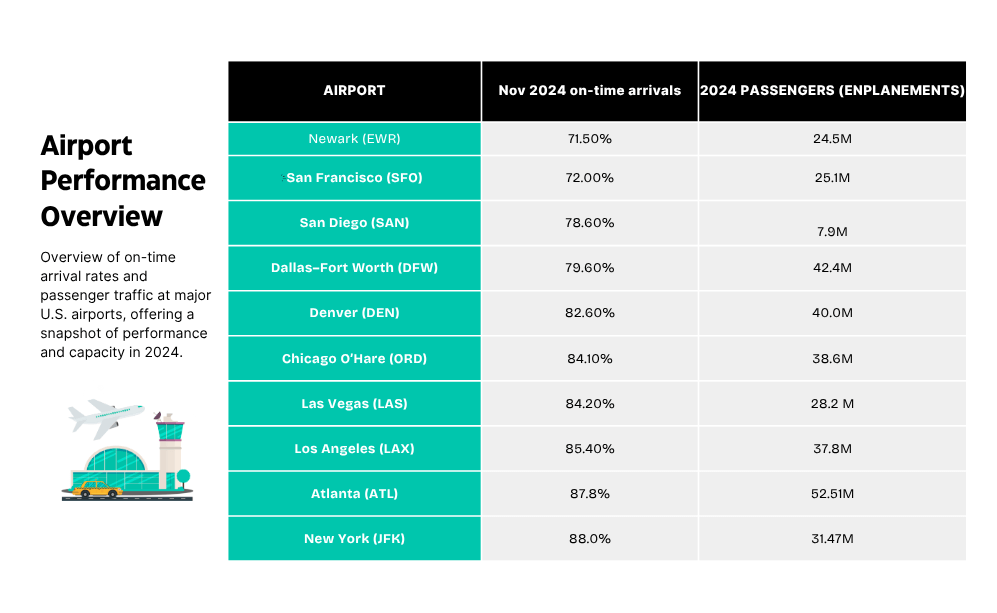
1. Newark Liberty International Airport (EWR)
Newark tops the list for all the wrong reasons. Only 71.5% of flights arrived on time last November, the lowest rate among large U.S. hubs. Blame it on Northeast congestion, limited runway capacity, and the chain reaction that starts every time bad weather moves through New York airspace. With more than 24 million passengers a year, even short delays here ripple across thousands of itineraries.
If you’re flying through:
- If you can, book morning arrivals and early departures. The first wave of flights tends to run closer to schedule before issues start and delays happen.
- For long-haul international routes, you could consider flying out of/into JFK instead of Newark that week. According to the DOT report, JFK held a much steadier 88% on-time rate last November.
2. San Francisco International Airport (SFO)
Only 72% of flights arrived on time at SFO in November 2024. The airport’s parallel runways can’t always handle full capacity in bad weather. This means arrivals have to space out, and that can cause a chain reaction of delays. With more than 25 million passengers a year, that could mean a lot of unhappy travelers.
If you’re flying through:
Midday flights usually do better once the fog lifts. If you’re flying out of or into the Bay Area in general, Oakland (OAK) and San Jose (SJC) both saw stronger on-time numbers in November, sitting comfortably in the mid-80s. You’ll still land close enough to get where you’re going, but with a better chance of being on time.
3. San Diego International Airport (SAN)
San Diego is smaller than most of the airports on this list, but it still saw 7.9 million passengers last year. About 79% of flights arrived on time in November, landing it below the national average. The single-runway layout means there’s less room to absorb delays once things get backed up.
If you’re flying through:
Book morning or midday flights when traffic patterns are smoother. Evening departures are more likely to face small hold times. If you can, travel midweek because weekends tend to be busier with leisure traffic.
4. Dallas–Fort Worth International Airport (DFW)
Dallas–Fort Worth is one of the busiest airports in the country, and during the holidays, you can feel it. About 80% of flights arrived on time last November, which isn’t bad given the sheer volume here. However, with more than 42 million passengers a year, small interruptions can snowball.
If you’re flying through:
Leave yourself extra time between connections, so a short delay doesn’t derail your trip. Morning flights usually fare better before weather patterns build up in the afternoon. And when you can, pick routes with several daily departures, so you have a backup plan if things stall.
5. Denver International Airport (DEN)
Denver handled about 40 million passengers last year, and 82.6% of flights arrived on time in November. It’s a solid rate for a major hub, though the season’s first snow or strong winds can still create slow days.
If you’re flying through:
Aim for midday departures after early morning de-icing delays clear out. If your route offers a nonstop option, take it. Fewer connections mean fewer chances to get stuck waiting.
6. Chicago O’Hare International Airport (ORD)
Chicago O’Hare saw 38.6 million passengers last year and an 84.1% on-time rate in November. For a hub that large, that’s respectable. Still, late fall in Chicago often means longer taxi times and busy arrival banks.
If you’re flying through:
Book earlier flights when operations are smoother and winds are lighter. If you’re connecting, give yourself at least 90 minutes. It’s better to stretch your legs than sprint across terminals.
7. Las Vegas Harry Reid International Airport (LAS)
Las Vegas moved more than 28 million passengers last year, and 84.2% of flights arrived on time in November. Most slowdowns happen around heavy weekend traffic rather than weather.
If you’re flying through:
Try to avoid late-night Sunday departures when everyone else is leaving town. Pick airlines with multiple daily flights on your route, so you have flexibility if timing slips.
8. Los Angeles International Airport (LAX)
Los Angeles handled 37.8 million passengers last year and posted an 85.4% on-time rate in November. The skies stay busy, but it’s the roads and sold-out LAX parking around the airport that test patience most.
If you’re flying through:
Leave plenty of time for traffic and security lines before your flight. Morning departures are smoother, and rideshare pickups move faster outside of rush hour.
9. Atlanta Hartsfield–Jackson International Airport (ATL)
Atlanta remains the country’s busiest airport, with over 52 million passengers last year and a strong 87.8% on-time rate in November. Even when traffic peaks, this hub tends to recover quickly.
If you’re flying through:
Expect crowds on the biggest travel days, but schedules here hold steady. Stick with morning or early afternoon flights to stay on track, and plan extra time to move between concourses.
10. New York John F. Kennedy International Airport (JFK)
JFK managed 31.5 million passengers last year and saw an 88% on-time rate in November, one of the best among large U.S. hubs. It’s a steadier bet for long-haul flights, especially during the holidays.
If you’re flying through:
You’ll still face crowds, but operations here hold up well. Arrive early, give yourself space to check bags and clear security, and enjoy a rare New York win; an airport that actually runs on time.
A note before you fly
Holiday travel will always have its snarls – a long taxi line, a crowded gate, that one flight that seems to take forever to board. But most trips still make it to where they’re going, and a little timing goes a long way. Morning flights tend to behave better, longer layovers save headaches, and sometimes it’s worth picking the smaller airport that just runs smoother. However you plan it, pack some patience, keep your charger close, and remember that a slow day in the air still beats a day spent wishing you were going somewhere.
How we ranked them
To find the airports most likely to see delays this November, we compared two data points:
- On-time arrival rates for November 2024 from the U.S. Department of Transportation’s Air Travel Consumer Report (January 2025 edition).
- Annual passenger volumes for 2024 compiled by the FAA and published on Wikipedia’s List of the Busiest Airports in the United States.
Airports with the lowest on-time rates and highest passenger counts rose to the top of the list, i.e., airports where even small disruptions affect a lot of travelers.
Renée Martin is a travel and car expert who focuses on road and air travel in the U.S. For the past 6 years, she’s been helping make driving and trip planning easier and budget-friendly for everyday travelers.
